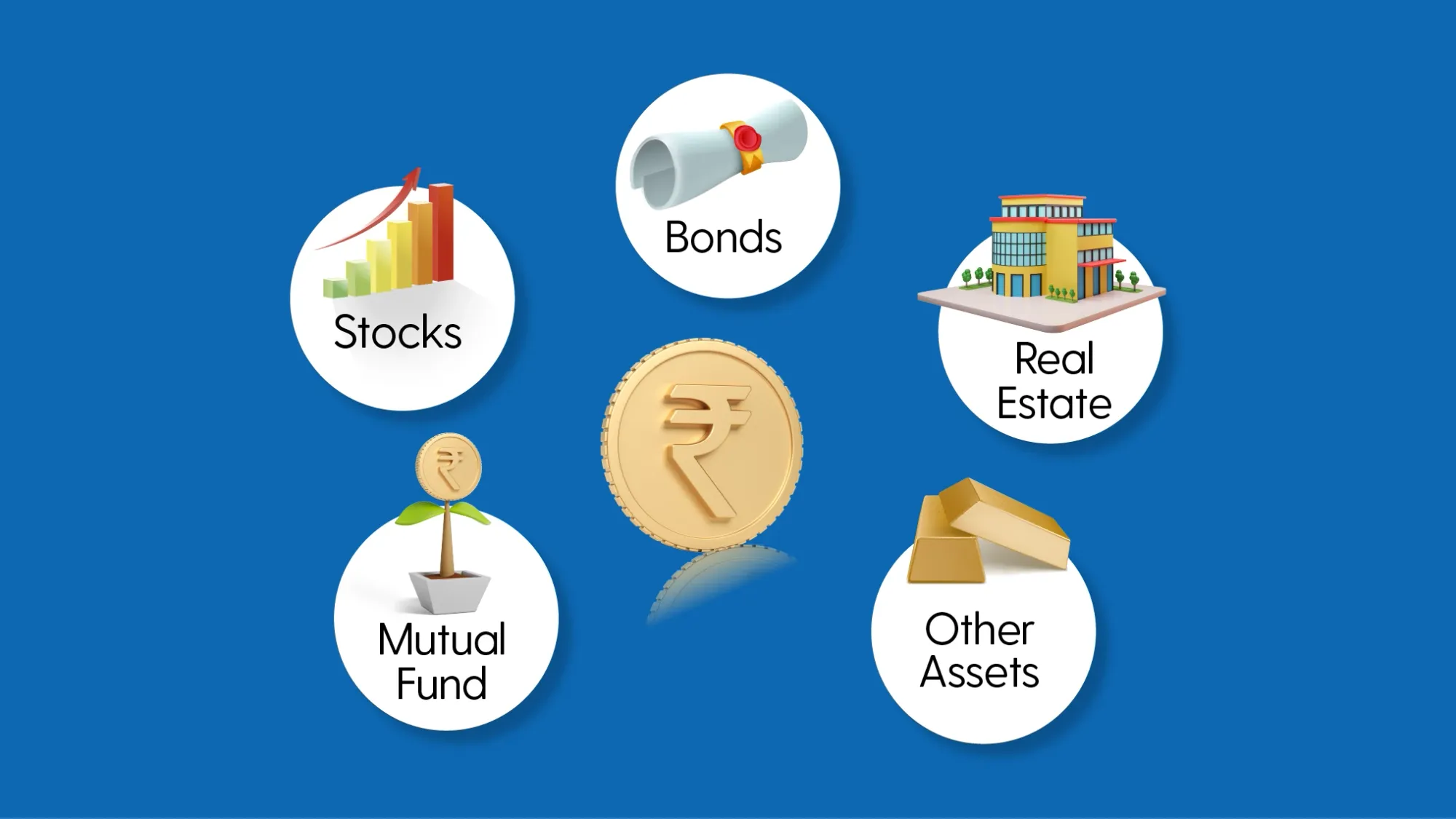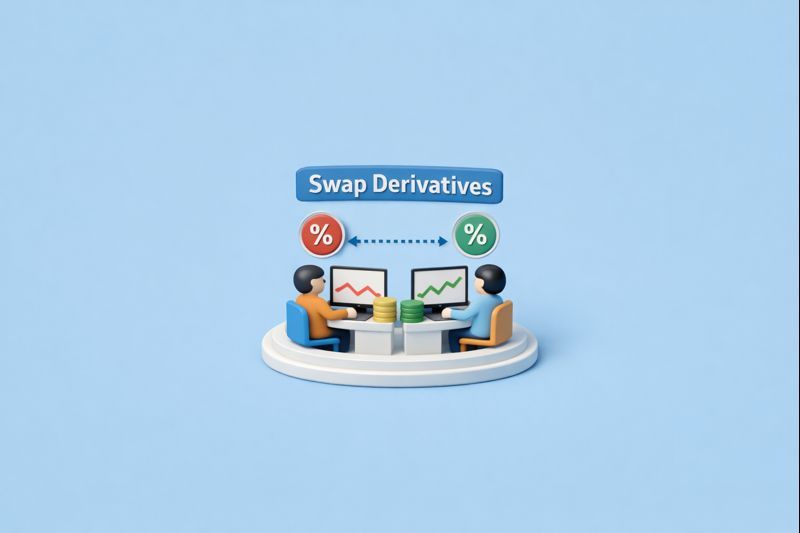What is Portfolio Management

- Published Date: October 16, 2024
- Updated Date: November 28, 2025
- By Team Choice
Investment is like sailing across uncharted waters. You can't get it right by chance; instead, it is an elaborately designed strategy that you modify and readjust with shifting tides. In this regard, portfolio management is your compass as you forge ahead through the maze of asset allocation, risk assessment, and performance tracking. It's not about investing money but making smart decisions that align with your long-term goals.
This blog will explore what portfolio management is through a balanced investment strategy to show ways to minimise risks and get you on track toward your financial objectives.
What is Portfolio Management?
Portfolio management is the art and science of making investment decisions to fulfil specific financial goals. It is a process of periodic buying and selling of securities within the portfolio to attain the investor's objectives, given the level of risk tolerance and time horizon. Individual investors and professional managers of portfolios might undertake portfolio management. These professionals use various strategies and tools to build and maintain appropriate portfolios for their clients' financial goals.
Objectives of Portfolio Management
Let's understand with a simple example of portfolio management. Suppose the investor is willing to plan for retirement in 20 years. They may apply a balanced portfolio strategy of 60% stock and 40% bonds. The stock portion can be diversified across different sectors and regions, while the bond portion may comprise a mixture of government and corporate bonds.
The primary objectives of building an investment portfolio are as follows:
- Maximise Return: The main goal is to maximise returns on the investments within the risk threshold the investor tolerates.
- Minimise Risk: Portfolio management seeks to minimise risks through diversification and strategic asset allocation.
- Meeting Financial Goals: Generally, a portfolio is constructed for retirement, higher education, or wealth accumulation.
- Liquidity Maintenance: Ensuring sufficient liquid assets to meet short-term needs without compromising long-term returns.
Types of Portfolio Management
The table below shows a quick overview of the different types of portfolio management:
| Type of Portfolio Management | Description | Example |
|---|---|---|
| Active Portfolio Management | Involves frequent buying and selling of assets to outperform market indices. Uses research, forecasts, and analysis for decisions. | A fund manager actively trades stocks to capitalize on short-term market opportunities. |
| Passive Portfolio Management | Aims to replicate market indices rather than outperform them. Involves investing in index funds or ETFs. | Investing in a Nifty index fund to mirror the performance of the Nifty index. |
| Discretionary Portfolio Management | The portfolio manager makes investment decisions independently, without client approval for each transaction. | A high-net-worth individual delegates investment decisions to a portfolio manager who manages their assets autonomously. |
| Non-Discretionary Portfolio Management | The client retains control over all investment decisions, with the portfolio manager providing recommendations but no trade execution without the client's consent. | An investor receives advice from a portfolio manager but makes all final investment decisions themselves. |
Common Portfolio Management Strategies
Investors can choose their portfolio management strategy based on their risk appetite. The standard methods used are:
| Strategy | Description | Target Investor |
|---|---|---|
| Aggressive | Prioritises maximising potential earnings, often by investing in riskier industries or alternative assets. Investors accept higher risk in hopes of significant returns from a few high-performing investments. | Investors seeking high returns and willing to accept significant risk. |
| Conservative | Focuses on capital preservation, minimising the risk of losses even if it means lower growth. This strategy suits extremely risk-averse investors who prefer stability over high returns. | Investors who prioritise safety and capital preservation. |
| Moderate | Blends aggressive and conservative approaches. Invests heavily in equities but also diversifies to balance risk and return. Aims to achieve moderate growth with controlled risk. | Investors looking for a balance between risk and return. |
| Income-oriented | Targets generating income through bond coupons or dividends. Often preferred by retired investors who rely on their portfolio returns for living expenses. | Retired investors or those needing steady income. |
| Tax Efficiency | Focuses on minimising taxes, which may come at the cost of higher returns. Important for high earners or young investors planning long-term growth with tax-advantaged accounts like Roth IRAs. | High earners or young investors seeking long-term tax benefits. |
The risks and rewards from investments vary based on the choice of strategy. Generally, high-risk investments offer higher rewards. Young investors can take more risk because they will have a long time horizon to balance the losses. Those who approach their retirement age generally choose conservative investments for capital protection. The risk-reward allocation varies with each investment strategy:

Key Elements of Portfolio Management
Building the right investment portfolio with minimal risks and maximum returns is tedious. Critical factors to understand are:
Asset Allocation
A long-term, well-thought-out asset mix is imperative for effective portfolio management. It would typically comprise equities, commonly known as stocks, fixed-income securities, or bonds, and cash equivalents comprising fixed deposits. Other alternatives include real estate, commodities, derivatives, and cryptocurrencies.
Example: An investor can invest 60% of his portfolio in equities, 30% in bonds, and 10% in cash equivalents. Under equities, one can further diversify into technology, healthcare, and finance sectors. Under bonds, he may opt for a mix of government and corporate bonds.
Diversification
Diversification is a strategy whereby the investor spreads their investments across different classes of assets, hence reducing risk. Nobody can tell what will work and what will not; therefore, diversification enables you to capture the returns coming from other segments while reducing impacts from some underperforming assets.
Example: A diversified portfolio may be invested in Indian equity, overseas equity, government bonds, real estate, and other commodities such as gold. By holding assets across different sectors and regions, the investor reduces the risk associated with any single investment.
Rebalancing
Rebalancing refers to an adjustment in a portfolio to regain its asset allocation. This is done regularly; for example, the portfolio is reinstated to its intended risk-return profile at the end of a year.
Example: An investor's portfolio, starting at an equity/fixed income mix of 70% / 30%, can capitalise on a strong stock market rally by rebalancing it to 80% / 20%. To rebalance later after the rally, the investor will sell some equities and buy more fixed-income securities to return to their original asset allocation of 70/30.
Tax Efficiency
Tax efficiency in portfolio management involves limiting or reducing taxation impact over the long term. This includes choosing tax-efficient investments and strategies holding period tax implications and gains-and-losses management.
Example: An investor in India (opting for the old tax regime) who holds equity mutual funds for longer than one year must pay an LTCG tax of 10% on gains above ₹1 lakh. On the other hand, short-term gains on equities held less than one year are taxed at 15%. The longer an investor holds their investments, the lesser their tax outgo. An investment in tax-saving schemes such as ELSS increases the overall tax efficiency.
Portfolio Management Challenges
Some common portfolio management challenges are listed below:
Diversification is Complicated
Effective diversification is a crucial but challenging ingredient in portfolio management. Diversification involves scattering investments in various asset classes to reduce risks. It demands an understanding of market dynamics and a particular risk tolerance of the individual investor. For instance, an investor willing to diversify may be obliged to spread money between stocks, bonds, real estate, and commodities. On the other hand, a diversified portfolio with various securities can be expensive.
Example: An internationally diversified portfolio comprising various types of property and equity in emerging markets and internationally could have high transaction costs and substantial management costs. This makes effective diversification out of reach or less accessible to certain investors.
Risk Assessment and Strategy Development
Developing a sound investment strategy is contingent upon accurately analysing risk tolerance, investment horizon, and return expectations. To that effect, you should delineate your current and future financial goals; it is essential to recognise that goals will shift over time as life circumstances evolve: specific strategies like heavy investments in illiquidity seriously curtail flexibility and liquidity, thus offering little room for change.
Example: A young professional could invest aggressively to get high returns for 20 years. As one approaches retirement, they will switch to a conservative approach to preserve capital. In this instance, liquidation will be highly restricted at short notice if there is heavy investment in private equity.
Impact of Changes in Regulations
Changes in regulation, more precisely in the form of changes to tax legislation, may significantly affect portfolio strategies. New tax laws may require changing the investment portfolio to maintain tax efficiency and hold tax liabilities at their minimum levels.
Example: When new tax laws provide for higher capital gains taxes, the investor might have to move from high-turnover strategies to other more tax-efficient investments, such as long-term holding of tax-exempt bonds. With recent changes in India's tax regulations, such as taxing mutual funds, investors may have to reconsider their investment strategy as ELSS funds don’t qualify for tax deductions per the new tax regime.
Management Fees and Misalignment
Outsourcing to a portfolio manager comes with a management fee that eats into returns. There is also a potential disconnect regarding market views between the investor and the portfolio manager. The regulatory requirements for reporting further complicate the management process.
Example: An investor could be conservative, with a long-term stocks focus on blue-chip, while the portfolio manager herself may be more aggressive. The other significant drawback is that the reporting and paperwork required by SEBI in India are very detailed and can sometimes hinder and affect the portfolio's performance.
Portfolio Management Process
The portfolio management process refers to an overall ordered chain of activities executed to accomplish the goals of investment by balancing between the return and risk. This is done so a portfolio remains aligned with the investor's objectives and risk tolerance.
Here’s a breakdown of the portfolio management process:
| Step | Description | Example |
|---|---|---|
| Establish Investment Objectives | Define the portfolio's goals, such as capital growth, income generation, or preserving capital, along with the time horizon and risk tolerance. | An investor aims for capital appreciation with a 10-year horizon and a moderate risk tolerance. |
| Asset Allocation | Determine the optimal mix of asset classes (equities, fixed income, cash, and alternatives) based on the investment goals and risk profile. | Allocating 60% to equities, 30% to bonds, and 10% to cash to balance growth and stability. |
| Security Selection | Choose specific securities within each asset class based on market capitalization, sector, and financial metrics. | Selecting blue-chip stocks, high-quality bonds, and diversified mutual funds for a balanced portfolio. |
| Risk Management | Manage various risks (market, credit, liquidity) using techniques like diversification and hedging. | It diversifies investments across sectors and uses options to hedge against market downturns. |
| Performance Monitoring | Regularly track the portfolio's performance and make adjustments to ensure it remains aligned with the objectives. | Reviewing portfolio performance quarterly and adjusting asset allocation based on market changes. |
| Rebalancing | Adjust the portfolio's asset allocation periodically to maintain the desired risk-return profile. | Rebalancing a portfolio that has shifted from 60% equities to 70% equities after a market rally. |
Conclusion
The key to mastering complexities in investing is portfolio management. Setting up goals for investments, selecting appropriate assets, and controlling risks help construct the right strategy in tune with your financial objectives. By applying these principles, you can make good decisions and build a portfolio aimed at protection from uncertainties and growth. Put these techniques into practice, and you will be well on your way to financial prosperity, securing your financial future.
Want to create a balanced investment portfolio? Explore the Choice platform for expert guidance
Recommended for you

FII DII Data - Live Data

Share Market Prediction For Tomorrow

Market Prediction Today (24th December 2025)
